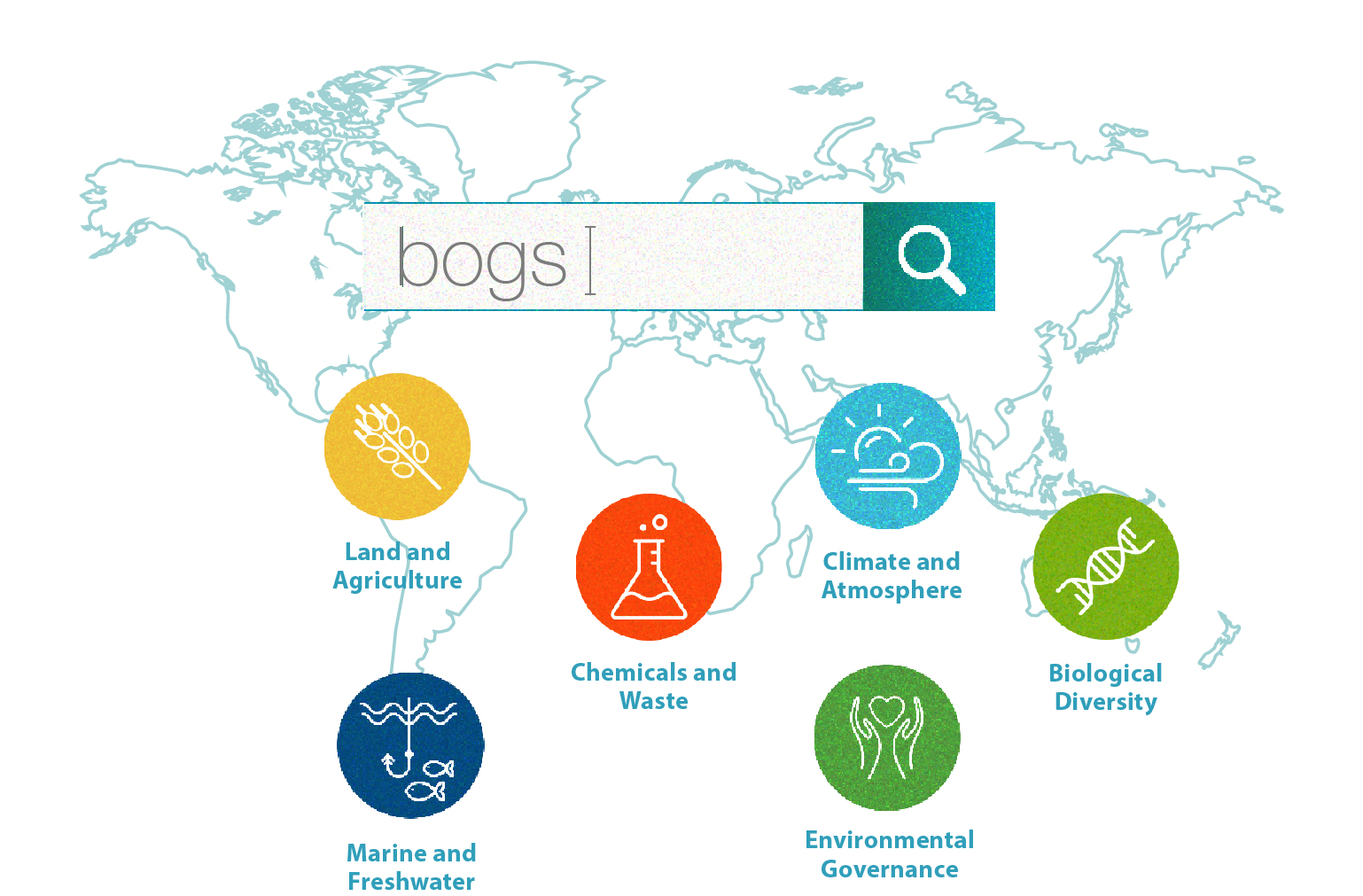How InforMEA Works: Peatlands

Peatlands are a type of wetland that develop when partially decomposed plant materials accumulate over centuries or millennia, which help provide safe drinking water, supply food, and prevent flood damage in ecosystems by regulating water flow. Peatlands cover just 3% of the Earth’s land surface, yet by some estimates store more carbon than all the world’s forests combined.

Since 1900, 64% of the world’s wetlands have disappeared, releasing massive amounts of carbon dioxide. 6% of global anthropogenic carbon emissions each year are from damage to peatlands. Protecting and restoring peatlands is a huge opportunity for climate change mitigation and helping countries meet their emissions reductions targets.
Peatlands can appear as bogs, swamps or even tropical landscapes depending on where they are located. Categorized by the peat soil found in them, peatlands must remain wet in order to continue storing carbon.


Major peatland concentrations are mainly found in Canada, Northern Europe, Western Siberia, Southeast Asia, and the Amazon basin.



